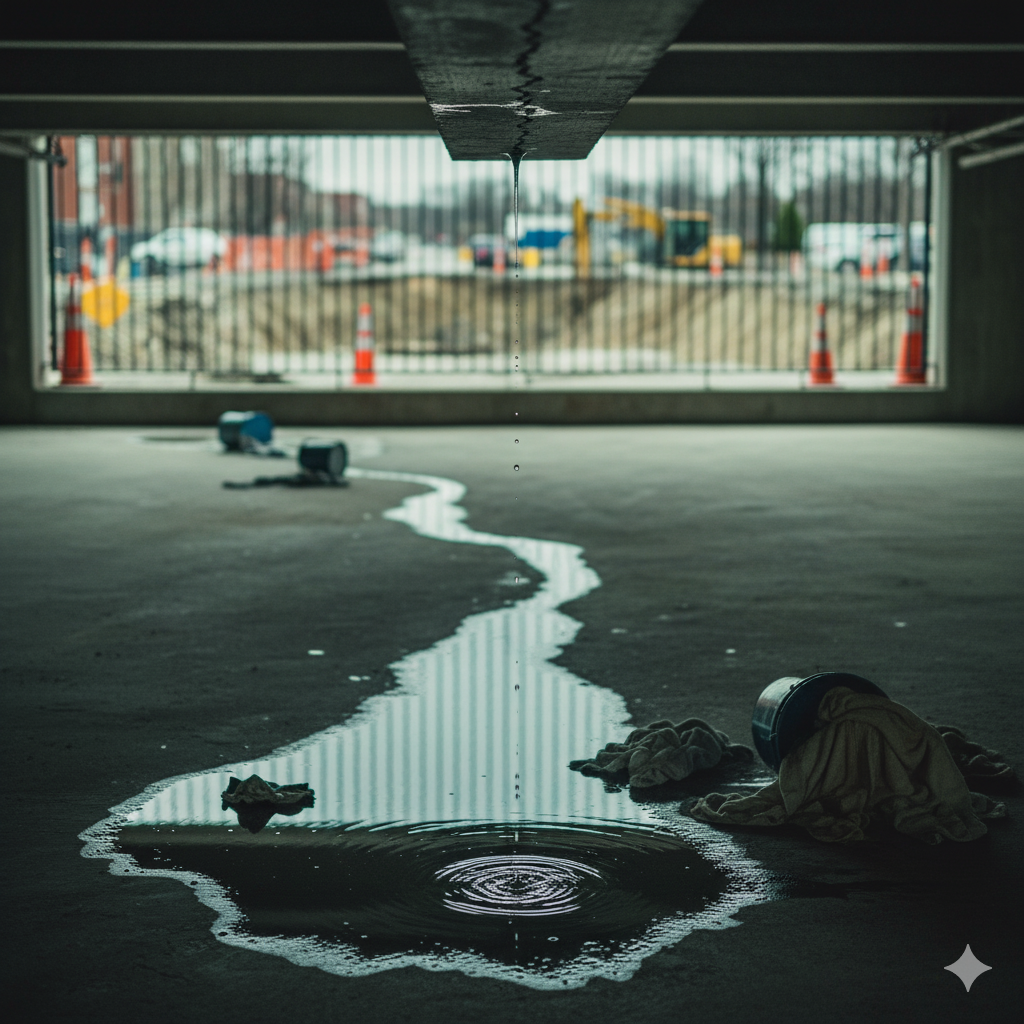Long-Running Garage Leak, The complaint that wouldn’t go away
A condo administrator asked us to investigate persistent water ingress into a tenant’s garage. The issue had dragged on for months and, on the day we arrived, the street was being rebuilt and resurfaced—a detail that would matter more than anyone expected.
What had already been tried
The owners had called several authorities. The Environmental Health Authority collected a sample, lost it, then re-sampled from the street instead of the garage. Meanwhile, Water Services Corporation (WSC) confirmed there were no burst mains nearby. The building contractor believed two things were contributing: (1) the block’s drainage hadn’t yet been connected to the government system; (2) an overflowing rooftop tank could be sending water down rainwater pipes and into the street.
Inside the garage: where the water travelled
We began with a visual inspection. Water was visibly tracking along a drain pipe that crosses the garage before tying into the block’s common system. The residents had improvised a collection trap that then discharged into common areas—well-meant, but risky for neighbouring garages.
Outside at street level: the “missing seal”
Up on the pavement we noticed fresh concrete between pavement and carriageway. A neighbour started washing her balcony and we watched the water disappear quickly—not pooling, not draining to a gully, but vanishing into a gap between pavement and road. We flagged it to the road crew, who confirmed the opening and agreed to seal it properly.
Diagnosis
This was a multi-source problem: street runoff slipping through incomplete pavement/road sealing, plus potential internal contributions (overflowing roof tank, drainage still pending connection). The under-street seepage likely tracked into the sub-base and found an easy path into the garage area.
What we recommended
- Seal the pavement-to-road interface thoroughly and re-check after rainfall.
- Extend the collection-trap outlet to a proper drain to avoid damaging other garages.
- Connect the block drainage to the main network as soon as roadworks permit.
- Stop any rooftop tank overflow until the permanent connections and sealing are complete.
- If concerns remain, run a dye test during rain to confirm the path.
Outcome
With the external sealing completed and the temporary discharge rerouted, the ingress reduced significantly. We left the condo with a clear plan for the remaining steps and a simple mantra: seal outside first, then fine-tune inside.
Seeing similar symptoms? Our [Water Leak Detection] and [Thermal Imaging] teams can document cause and effect so your administrators can act decisively.







